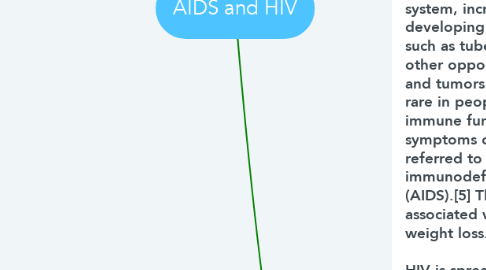AIDS and HIV
by Kian Bryant

1. use condom to avoid aids; safety first;lamang ang may alam
1.1. Durex. Fetherlite 12-Pieces Per Box. 2 Reviews. ... Trust. Classic Strawberry Scent 3s. 1 Reviews. ... Trust. Cruise Control Condom 3 x 24. 0 Reviews. ... Trust. Ultra Thin Condom 3x 24. 2 Reviews. ... Trust. Ultra Thin Shower Fresh Scent 3s. 3 Reviews. ... Okamoto. 0.03 Platinum Condom 3pieces. ... Durex. Performa Condom 12s. ... Trust. Classic Chocolate Scent 3s.
1.2. Suppot ng ice candy, maliit na lobo
2. Human immunodeficiency virus infection and acquired immune deficiency syndrome (HIV/AIDS) is a spectrum of conditions caused by infection with the human immunodeficiency virus (HIV).[9][10][11] Following initial infection a person may not notice any symptoms, or may experience a brief period of influenza-like illness.[4] Typically, this is followed by a prolonged period with no symptoms.[5] If the infection progresses, it interferes more with the immune system, increasing the risk of developing common infections such as tuberculosis, as well as other opportunistic infections, and tumors which are otherwise rare in people who have normal immune function.[4] These late symptoms of infection are referred to as acquired immunodeficiency syndrome (AIDS).[5] This stage is often also associated with unintended weight loss.[5] HIV is spread primarily by unprotected sex (including anal and oral sex), contaminated blood transfusions, hypodermic needles, and from mother to child during pregnancy, delivery, or breastfeeding.[12] Some bodily fluids, such as saliva, sweat and tears, do not transmit the virus.[13] HIV is a member of the group of viruses known as retroviruses.[14] Methods of prevention include safe sex, needle exchange programs, treating those who are infected, pre- and post-exposure prophylaxis, and male circumcision.[4] Disease in a baby can often be prevented by giving both the mother and child antiretroviral medication.[4] There is no cure or vaccine; however, antiretroviral treatment can slow the course of the disease and may lead to a near-normal life expectancy.[5][6] Treatment is recommended as soon as the diagnosis is made.[15] Without treatment, the average survival time after infection is 11 years.[7] In 2018 about 37.9 million people were living with HIV and it resulted in 770,000 deaths.[8] An estimated 20.6 million of these live in eastern and southern Africa.[16] Between the time that AIDS was identified (in the early 1980s) and 2018, the disease caused an estimated 32 million deaths worldwide.[8] HIV/AIDS is considered a pandemic—a disease outbreak which is present over a large area and is actively spreading.[17] HIV originated in west-central Africa during the late 19th or early 20th century.[18] AIDS was first recognized by the United States Centers for Disease Control and Prevention (CDC) in 1981 and its cause—HIV infection—was identified in the early part of the decade.[19] HIV/AIDS has had a large impact on society, both as an illness and as a source of discrimination.[20] The disease also has large economic impacts.[20] There are many misconceptions about HIV/AIDS, such as the belief that it can be transmitted by casual non-sexual contact.[21] The disease has become subject to many controversies involving religion, including the Catholic Church's position not to support condom use as prevention.[22] It has attracted international medical and political attention as well as large-scale funding since it was identified in the 1980s.[23]


